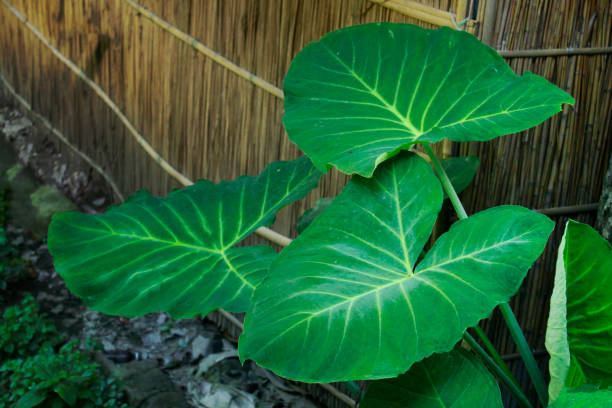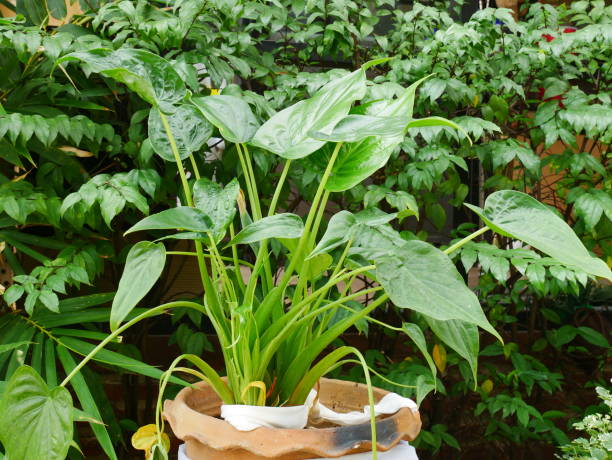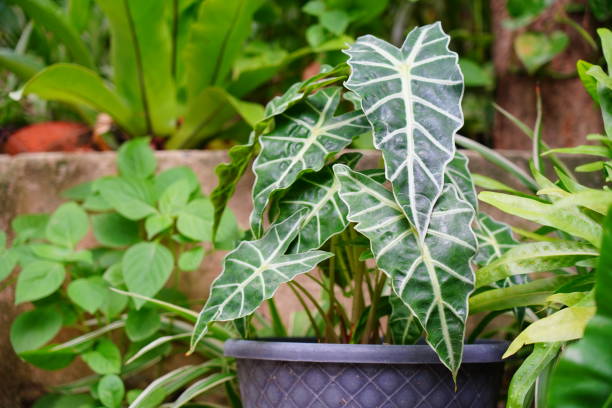
If you have an elephant ear plant in your home, you may have noticed that it has begun to drip water. This is a common issue for many people who own these plants and can be caused by several factors. This article will discuss why your elephant ear plant might be dripping water and how to fix the problem so your plant can thrive. We’ll also provide some tips on general care of the elephant ear plant so you can keep it healthy and enjoy its striking foliage for years to come!
What Is an Elephant Ear Plant
If you’ve been looking for a unique and eye-catching houseplant, the elephant ear plant may be just what you’re looking for. These bold plants are sure to turn heads with their huge leaves and colorful foliage. But before you take one home, let’s look at what makes the elephant ear plant unique and how to care for it.
The elephant ear plant (Colocasia) is a tropical perennial that typically grows in wet, marshy areas – though it can also thrive indoors as a houseplant. Native to Southeast Asia and India, these plants are known for their large, arrow-shaped leaves that resemble elephant ears or taro plants.
They come in a wide variety of colors, including green, purple, yellow, black, maroon, and gray – some even have variegated foliage that adds even more visual interest.
Why Do Elephant Ear Plants Drip

One reason that elephant ear plants may drip is due to their natural watering needs. These plants prefer consistently moist soil, but they do not tolerate standing water.
Soil
If the soil is too dry, the plant may wilt and the leaves may droop, causing water to drip from the tips of the leaves. On the other hand, if the soil is too wet or the plant is overwatered, excess water may drain from the pot or drip from the leaves.
Humidity
Another reason that elephant ear plants may drip is due to high humidity levels. These plants thrive in humid environments and may release excess water from their leaves to regulate their internal temperature and maintain a healthy water balance.
This process, known as transpiration, is a natural way for plants to cool themselves and prevent overheating. If the humidity levels are too low, the plant may start to drip to compensate for the lack of moisture in the air.
Light
Another factor that can affect your elephant ear plant’s water balance is the amount and type of light it gets. These plants prefer bright, indirect sunlight but may also do well in shadier spots if they have enough humidity.
If you notice water droplets on the leaves, it could be due to too much direct sunlight or a lack of humidity. You may need to adjust the lighting or mist the leaves with water if it appears too dry.
Is Leaf Dripping a Bad Sign for My Elephant Ear?

If you are the proud owner of an elephant ear plant, the sight of dripping leaves could be making you feel a bit concerned. While a droopy leaf may cause alarm, it is essential to take a deeper look at its overall condition before jumping to conclusions.
There are several causes for drooping leaves, including too little water, too much water, or excess sunlight. Start by feeling the soil; if it is really dry, add some watering and see if that helps; however, if it is wet and soggy, drain the pot and lay off on the watering for a few days.
If your elephant ear looks great in all other areas except for one or two leaves that drip, then try adjusting its sunlight exposure because too much can result in drooping leaves of this type of plant.
When Should I Worry About Guttation?
Guttation is the process by which plants release excess water through small openings called hydathodes, typically found on the leaves or stems. This excess water is often visible as droplets on the leaves or stem of the plant.
While guttation is a normal process for many plants, there are some situations in which it may be cause for concern. If you notice that your plant is producing large amounts of guttation, or if it is accompanied by other symptoms such as yellowing or wilting leaves, it may be a sign that something is wrong with the plant.
One common cause of excessive guttation is over-watering. If you are watering your plant too frequently or providing it with too much water, the soil may become waterlogged, and the plant may not be able to absorb all of the water it needs. This can lead to guttation as the plant tries to release the excess water.
Other potential causes of excessive guttation include pests, diseases, or environmental stressors such as extreme temperatures or insufficient light. If you are concerned about guttation in your plant, it is a good idea to monitor the plant carefully and look for any other symptoms that may indicate a problem. If you cannot identify the guttation’s cause, consider seeking a horticultural expert’s advice.
How to Stop Elephant Ear Plants from Dripping Water

Are you wondering why your elephant ear plant is dripping water? You’re not alone! Many people are surprised that their beloved houseplants can start drip water, which is often due to an imbalance in the conditions they need for healthy growth. We’ll discuss what makes the elephant ear plant unique, why it may be dripping water, and how you can fix the problem, so your plant stays hydrated and happy. We’ll also provide some tips on general care of the elephant ear plant so you can keep it looking its best all year round!
- Make sure that the plants are getting enough water. Elephant ear plants need to be consistently moist but not waterlogged. If the soil is too dry, the leaves may produce more water as the plant tries to compensate.
- Check the humidity level around the plants. Elephant ear plants thrive in high humidity, so if the air is too dry, the leaves may produce more water as the plant tries to increase the humidity around the leaves.
- Repot the plants into well-draining soil. If the soil is too heavy or compacted, it may not drain properly, which can cause the plants to produce more water. Use a potting mix that contains perlite or vermiculite to help improve drainage.
- Trim off any damaged or diseased leaves. If the leaves of your elephant ear plant are damaged or diseased, they may produce more water as the plant tries to heal itself. Removing these leaves can help reduce the amount of water produced.
- Place a saucer or tray under the pots to catch any excess water. If the plants are placed on a surface sensitive to water, such as a wood table, you can place a saucer or tray under the pots to catch any excess water dripping off the leaves. This will help prevent any water damage to the surface.
Overall, it is essential to be mindful of the environment in which your elephant ear plant lives. Ensure that you provide enough water and humidity for the plants while also ensuring proper drainage, so they don’t become waterlogged. Additionally, trim off any damaged or diseased leaves, as this can help reduce the amount of guttation produced by the plant. Finally, place a saucer or tray under pots to catch excess water dripping from its leaves. With these tips in mind, you should have no problem keeping your elephant ear plant healthy and happy!





